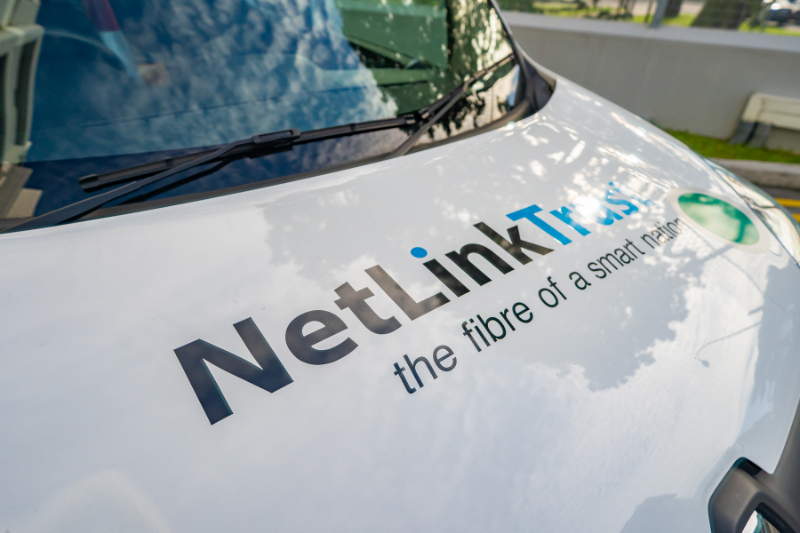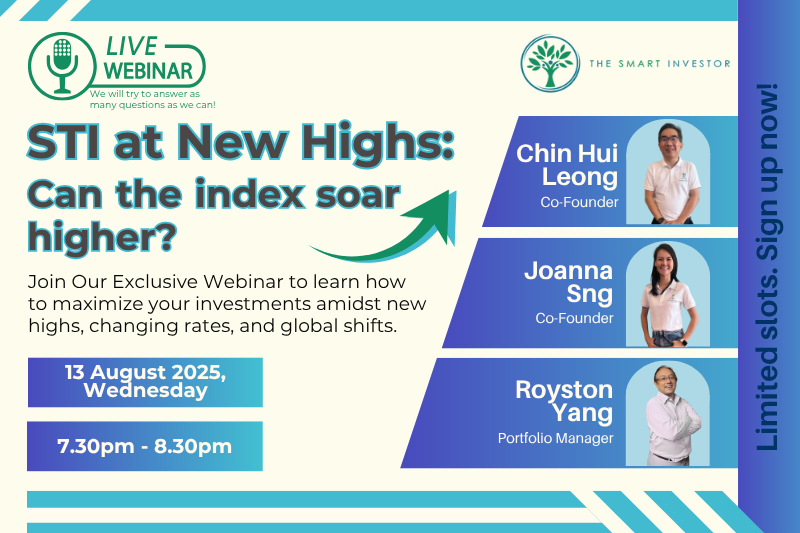The Central Provident Fund (CPF) offers safe, risk-free returns.
Typical returns range from 2.5% per year in the Ordinary Account (OA) to 4% in the Special and Medisave Accounts (SA and MA).
However, your CPF funds can do better — the CPF Investment Scheme (CPFIS) allows you to invest a portion of your CPF Ordinary Account in stocks to potentially earn higher returns.
With so many options available, which stocks deserve your hard-earned money?
Here are four quality names that combine stability, dividend strength, and long-term growth potential – perfect for CPF portfolios.
NetLink NBN Trust: Reliable Income and Stability
NetLink NBN Trust (SGX: CJLU), or NetLink, builds, maintains, and operates Singapore’s fibre network infrastructure that delivers high-speed internet to homes and businesses.
NetLink’s monopoly on the Singapore fibre network underscores the resiliency and predictability of the business.
The trust is set to earn a government-regulated return of 7% per year on its asset value from April 2024 to April 2029.
It can charge a monthly fee of S$13.50 per residential connection, S$55.00 per non-residential connection, and S$70.50 for Non-Building Access Points (NBAP).
These fixed interconnect rates provide visibility and predictability of earnings and cash flows, giving NetLink the base to pay steady dividends.
Since FY2021 (fiscal year ended 31 March 2021), NetLink has generated a stable average annual net operating cash flow of around S$270.4 million .
Its dividend per share has increased by 5.5% over the same period to S$0.0536 for FY2025.
Over the last five fiscal years, NetLink has had an average dividend payout ratio (dividends as a percentage of net operating cash flow) of 74.3%.
The trust has a solid balance sheet, with a net gearing ratio of 20% as of its latest update for June 2025.
NetLink’s current share price of S$0.975, coupled with its latest dividend of S$0.0536 for FY2025, represents a trailing yield of roughly 5.50%.
NetLink’s defensive nature and predictable dividends make it an ideal stock for CPF portfolios.
Singapore Exchange Limited: Growth With Income Potential
Singapore Exchange Limited (SGX: S63), or SGX, has grown its revenue at a steady compound annual growth rate (CAGR) of 5.9% from S$818.1 million to S$1.37 billion over the last decade.
Net income rose faster at a CAGR of 7.1% from S$349.0 million to S$648.0 million over the same period.
As Singapore’s only approved and regulated financial exchange, SGX has earned steadily growing revenue over the last decade from the trading of securities and derivatives.
This allows SGX to be a consistent dividend payer, with an annual dividend being paid for the past decade.
Recently, SGX’s dividend per share increased by 8.7% year-on-year to S$0.375 for the fiscal year ending 30 June 2025.
SGX’s current return on equity (ROE) ratio stands at an impressive 31.1% .
SGX trades at an estimated forward price to earnings (P/E) ratio of 22.4 times, slightly above its five-year average of 21.7 times.
Recent initiatives, such as the S$5 billion Equity Market Development Programme launched by the Monetary Authority of Singapore and the Financial Sector Development Fund, which is designed to increase financial markets’ activity, bodes well for SGX’s future earnings.
SGX presents a mix of income today and potential capital appreciation tomorrow.
Sembcorp Industries: The Defensive Dividend Play
Sembcorp Industries Limited (SGX: U96), or Sembcorp, is a utility company that provides portfolio resilience.
Operating cash flows have been predictable and stable over the last three years, averaging around S$1.5 billion.
The utility has a relatively stable dividend yield, averaging 2.46% from 2021 through to the last 12 months, through COVID and the high-inflation environment of 2022.
Sembcorp’s ordinary dividend per share was raised by 475% from S$0.04 in 2020 to S$0.23 in 2024; even in 2019, which was pre-COVID, Sembcorp’s ordinary dividend was just S$0.05 per share.
Its latest interim dividend of S$0.09 per share is up 50% from the prior year.
Sembcorp’s net debt to equity ratio is elevated at 1.34.
However, the company’s steady earnings since COVID, underpinned by long-term contracted power deals, provide visibility and resilience to mitigate the high leverage.
Sembcorp’s earnings before interest, tax, depreciation, and amortisation (EBITDA) comfortably covered interest expenses by 4.3 times in the first half of 2025.
Sembcorp offers peace of mind and reliable income even during uncertain times.
DBS: The Long-Term Compounder
DBS Group Holdings Limited (SGX: D05) is a stock that best exemplifies long-term compounding.
Since the start of 2020, DBS’s share price has rallied by an impressive 126% from S$23.60 to S$53.32 currently.
With cumulative dividends paid of S$9.16 per share since 2020, DBS’ total return over this period is a staggering 262.5%.
The bank’s ordinary dividend per share rose at a CAGR of 29.3% from S$0.78 in 2020 to S$2.22 in 2024.
During this period, it has had an average dividend payout ratio (dividends as a percentage of earnings) of 49.5%.
DBS’s strong performance is the result of management’s excellent stewardship of the business, and it speaks to DBS’s strength as the largest bank in terms of assets in Southeast Asia.
DBS is currently trading at a trailing price-to-book (P/B) ratio of 2.2, which is a premium valuation compared to the average P/B of 1.6 times over the three-years ended 31 December 2024.
DBS is the perfect example of a stock that rewards patience and long-term compounding, and should be considered as a core part of a CPF portfolio.
How to Choose CPF-Eligible Stocks
CPF investing is meant for long-term, diversified investing, not short-term trading.
CPF-approved stocks must be offered by a Singapore-incorporated company and have their primary listing on the SGX Main Board.
Shares must be traded in Singapore dollars and not placed on SGX’s watch-list.
Consider investing in stocks across various sectors to manage risk.
Pay attention to fundamentals such as stable earnings, healthy balance sheets, and sustainable dividend payouts.
Remember, CPF investing does not mean replacing your core savings.
What This Means for Investors
You could invest in high-quality blue-chip dividend companies that might out-earn CPF’s base interest.
The key is choosing durable, dividend-paying businesses aligned with your risk tolerance and retirement goals.
Get Smart: Make CPF Work Harder for You
Your CPF money can grow more than the guaranteed interest payments, through ownership in strong Singapore companies.
The smartest investors combine CPF’s safety with disciplined equity investing for a stronger, smarter retirement plan.
Our beginner’s guide to investing is finally here! Many investors took years to understand the principles inside, but you can have it all in one afternoon. If you have just started investing, download our free guide today so you can catch up quickly. Click here to download now.
Disclosure: Wesley does not own shares in any of the companies mentioned.





